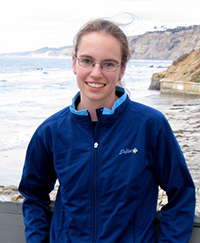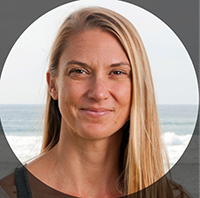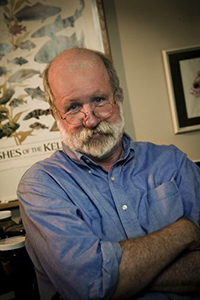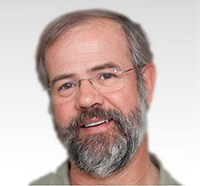 Elizabeth C. Sibert. Society of Fellows, Harvard University, 78 Mount Auburn Street, Cambridge, Massachusetts 02138, USA; Scripps Institution of Oceanography, University of California, San Diego, 9500 Gilman Drive MC 0208, La Jolla, California 92093, USA. esibert@fas.harvard.edu
Elizabeth C. Sibert. Society of Fellows, Harvard University, 78 Mount Auburn Street, Cambridge, Massachusetts 02138, USA; Scripps Institution of Oceanography, University of California, San Diego, 9500 Gilman Drive MC 0208, La Jolla, California 92093, USA. esibert@fas.harvard.edu
Elizabeth C. Sibert is a Junior Fellow in the Harvard Society of Fellows, affiliated with the Organismic and Evolutionary Biology Department and the Earth and Planetary Sciences Department at Harvard University. She received her PhD from Scripps Institution of Oceanography in 2016. She works on ichthyoliths, and the structure, function, and evolution of pelagic ecosystems during the Cretaceous and Cenozoic.

 Katie L. Cramer. Scripps Institution of Oceanography, University of California, San Diego, 9500 Gilman Drive MC 0208, La Jolla, California 92093, USA. kcramer@ucsd.edu
Katie L. Cramer. Scripps Institution of Oceanography, University of California, San Diego, 9500 Gilman Drive MC 0208, La Jolla, California 92093, USA. kcramer@ucsd.edu
Katie L. Cramer is a Postdoctoral Fellow at Scripps Institution of Oceanography, UC San Diego studying the historical ecology of coral reefs from the analysis of young fossil assemblages, historical archives, and archaeological data. Other research interests include marine biogeography, fisheries science, and marine policy and conservation. She received her Ph.D. from Scripps Institution of Oceanography in 2011.

 Philip A. Hastings. Scripps Institution of Oceanography, University of California, San Diego, 9500 Gilman Drive MC 0208, La Jolla, California 92093, USA. phastings@ucsd.edu
Philip A. Hastings. Scripps Institution of Oceanography, University of California, San Diego, 9500 Gilman Drive MC 0208, La Jolla, California 92093, USA. phastings@ucsd.edu
Philip A. Hastings is Professor of Marine Biology and Curator of the Marine Vertebrate Collection at Scripps Institution of Oceanography, University of California San Diego, where he studies the systematics, evolution, ecology and behavior of fishes. http://scrippsscholars.ucsd.edu/phastings

 Richard D. Norris. Scripps Institution of Oceanography, University of California, San Diego, 9500 Gilman Drive MC 0244, La Jolla, California 92093, USA. rnorris@ucsd.edu
Richard D. Norris. Scripps Institution of Oceanography, University of California, San Diego, 9500 Gilman Drive MC 0244, La Jolla, California 92093, USA. rnorris@ucsd.edu
Richard D. Norris is professor and curator of the geological collections at Scripps Institution of Oceanography. He got his PhD in 1990 from Harvard University and works on the biological and physical processes that structure marine biodiversity using the deep sea microfossil record. He also studies human impacts on marine ecosystems and past analogs for future Earth systems.


 A Review of Handbook of Paleoichthyology Volume 8a: Actinopterygii I, Palaeoniscimorpha, Stem Neopterygii, Chondrostei
A Review of Handbook of Paleoichthyology Volume 8a: Actinopterygii I, Palaeoniscimorpha, Stem Neopterygii, Chondrostei
 Palaeontologia Electronica among the most influential palaeontological journals
Palaeontologia Electronica among the most influential palaeontological journals